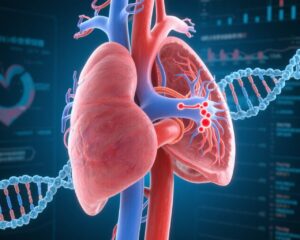Study Background and Disease Burden
Abdominal aortic aneurysm (AAA) constitutes a significant vascular pathology characterized by localized dilation of the abdominal aorta, which if ruptured, carries high morbidity and mortality. Screening programs for AAA aim to identify aneurysms early, especially in men over 65 years, providing an opportunity for surveillance and elective repair before rupture occurs. Despite this, no approved medical therapies have demonstrated conclusive efficacy in halting or slowing AAA progression. Previous meta-analyses have identified metformin and statins as potential pharmacological options, but data remain inconclusive. This gap highlights the need to evaluate interventions that could modify AAA growth and associated adverse outcomes. The study by Skovbo and colleagues addresses this critical unmet medical need by assessing the association of statin treatment and dosage with clinical outcomes in men with small AAAs detected through population screening trials in Denmark.
Study Design
This investigation was a prospective cohort study that pooled data from two large population-based randomized screening trials: the Viborg Vascular Screening trial (2008-2011) and the Danish Cardiovascular Screening trial (2014-2018). The study cohort comprised 998 men with screening-detected abdominal aortic aneurysms sized between 30 and 55 mm. Comprehensive clinical data were linked with national healthcare registries, providing detailed prescription records and outcome measures.
Statin exposure was quantified using defined daily doses (DDD), providing a refined assessment of statin intensity and dose-response relationships. The primary endpoint was the annual AAA growth rate calculated by linear regression of serial aortic diameter measurements over the observation period. Secondary endpoints included the incidence of surgical repair and a composite outcome comprising repair, rupture, and all-cause mortality. Patients were followed up to 5 years or until a censoring event such as surgery, rupture, death, or the end of the study period (December 31, 2021).
Key Findings
The study cohort had a median age of 69.5 years, with a median baseline AAA diameter of approximately 35 mm. Statin use demonstrated a statistically significant relationship with diminished aneurysm growth. Specifically, each incremental increase of 1 DDD per day was associated with a reduction of 0.22 mm/year in AAA growth rate (adjusted 95% CI, -0.39 to -0.06; P=0.009).
Regarding surgical intervention, the adjusted hazard ratio for undergoing AAA repair decreased by 18% per doubling of statin dose (HR 0.82; 95% CI, 0.70-0.97; P=0.023), with effects becoming evident after about 2.5 years. Moreover, statin therapy was associated with a notable dose-dependent reduction in the combined endpoint of repair, rupture, or death (HR 0.83; 95% CI, 0.73-0.94; P=0.003). These associations persisted across multiple sensitivity analyses, reinforcing the robustness of the findings.
These results highlight a clear dose-response effect of statins, not only in modulating aneurysm growth but also in clinically relevant outcomes that affect patient prognosis. Importantly, the protective effect against the need for surgical repair and adverse events may translate into improved long-term survival and quality of life for patients with small AAAs.
Expert Commentary
While the study is observational and thus cannot definitively establish causality, its strengths include the large sample size, population-based design, comprehensive follow-up, and utilization of nationwide prescription databases. These factors reduce selection and recall biases commonly encountered in similar cohort studies.
Mechanistically, statins exert pleiotropic effects beyond lipid lowering, including anti-inflammatory and matrix metalloproteinase-modulating activities, which could contribute to stabilization of aneurysm wall integrity and slowed progression. However, randomized controlled trials are necessary to confirm these associations and to clarify optimal statin dosing and timing in AAA management.
Current clinical guidelines do not recommend statins specifically for AAA growth attenuation but rather for cardiovascular risk reduction. This study therefore suggests a potential expanded therapeutic role that merits integration into future guidelines pending further validation.
Conclusion
In summary, this 5-year prospective cohort study from two population-based screening trials in Denmark provides compelling evidence that high-dose statin therapy is associated with slower growth of small abdominal aortic aneurysms and a reduced risk of repair, rupture, and all-cause mortality in men. These findings support a potential paradigm shift where statins could be considered not only for managing cardiovascular risk but also as a disease-modifying agent in AAA. Further randomized studies are warranted to confirm these observational findings and guide clinical practice.
References
Skovbo JS, Obel LM, Diederichsen ACP, Steffensen FH, Frost L, Lambrechtsen J, Busk M, Urbonaviciene G, Egstrup K, Dahl M, Karon M, Rasmussen LM, Hallas J, Lindholt JS. Association of Statin Treatment and Dose With the Clinical Course of Small Abdominal Aortic Aneurysms in Men: A 5-Year Prospective Cohort Study From 2 Population-Based Screening Trials. Circulation. 2025 Aug 12;152(6):384-396. doi: 10.1161/CIRCULATIONAHA.125.074544. Epub 2025 Jul 9. PMID: 40631665.



